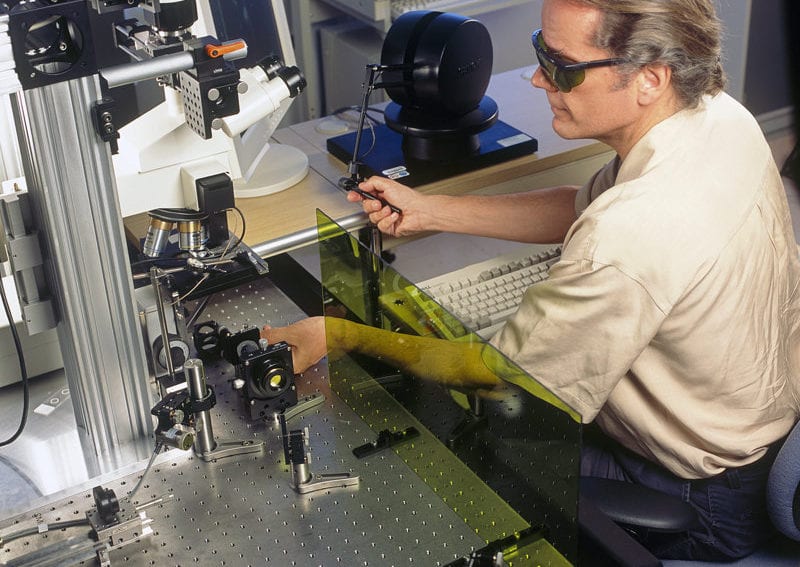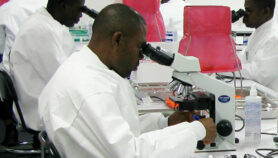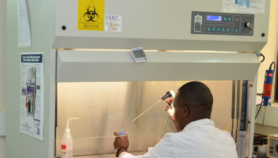By: Laura Owings
Send to a friend
The details you provide on this page will not be used to send unsolicited email, and will not be sold to a 3rd party. See privacy policy.
[JOHANNESBURG] Scientists in South Africa have developed a printed temperature sensor system that could monitor vaccines, medicinal and food shipments to improve their safety and reduce waste.
PST Sensors, an off-shoot of the University of Cape Town (UCT)’s NanoSciences Innovation Centre, announced in October its partnership with Norwegian technology company, Thinfilm, to put Smart Sensor Labels — a technology that tracks the changes in temperature of perishable goods — on the market by the end of 2014.
The labels are self-powered and are aimed at companies that ship pharmaceutical and consumer goods.
“50 per cent of all vaccines are thrown away because you don’t know if there’s been a temperature change and whether they’re going to be safe, says David Britton, a UCT professor who co-founded PST Sensors with Margit Härting, also a professor at the same institution.
Britton tells SciDev.Net that 30 per cent of food shipped around the world is thrown away because of their past expiry date and their unknown safety.
“It’s technology and materials produced in South Africa, and it has many applications for improving African life, but it’s applicable for medicine, point of care, diagnostics and food safety anywhere in the world.”
David Britton, PST Sensors
The electronic labels are thin, credit card-like devices printed on flexible plastic affixed directly to transport packaging. They hold their own battery, memory, transistor and sensor, and are capable of storing data for up to 10 years.
But it is the temperature sensor that is the ‘beating heart’ of the label. Printed with ink containing silicon nanoparticles, the core is a negative temperature coefficient (NTC) thermistor whose resistance goes down when temperatures go up, indicating fluctuations above 15 degrees or below 45 degrees Celsius.
Printed electronics help lower manufacturing costs and promote more widespread use of nanotechnology as long as they are well understood, explains Mark Hersam, director of the Materials Research Center at the US-based Northwestern University.
He notes: “The low cost will allow the products of nanotechnology to be employed more widely, allowing greater access to its health and food safety benefits. However, there is always a worry about the stability, reproducibility and lifetime of any new technology”.
The sensor technology developed by PST Sensors is the result of nearly 10 years of studying the unique properties of silicon, according to Britton.
He adds that the technology is being adapted to suit a range of applications, including the Kushushu mat — which could determine the temperature of someone lying on it — and energy-efficient low voltage Kushushu heater. These two applications, produced in partnership with two South African designers, employ the same technology as the smart sensor label but for point-of-care and home use.
Both products will debut at the World Design Capital 2014 in Cape Town, South Africa, highlighting the technological developments being achieved in the country, but the applications of PST Sensors extend throughout Africa, and the rest of the world.
“It’s technology and materials produced in South Africa, and it has many applications for improving African life, but it’s applicable for medicine, point of care, diagnostics and food safety anywhere in the world,” says Britton.
This article has been produced by SciDev.Net's Sub-Saharan Africa desk.














